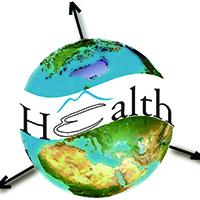Spatio-temporal epidemiology of emergency medical requests in a large urban area. A scan-statistic approach

Published: 28 October 2021
Abstract Views: 1724
PDF: 648
Appendix: 186
HTML: 111
Appendix: 186
HTML: 111
Publisher's note
All claims expressed in this article are solely those of the authors and do not necessarily represent those of their affiliated organizations, or those of the publisher, the editors and the reviewers. Any product that may be evaluated in this article or claim that may be made by its manufacturer is not guaranteed or endorsed by the publisher.
All claims expressed in this article are solely those of the authors and do not necessarily represent those of their affiliated organizations, or those of the publisher, the editors and the reviewers. Any product that may be evaluated in this article or claim that may be made by its manufacturer is not guaranteed or endorsed by the publisher.
Similar Articles
- Hassan M. Khormi, Lalit Kumar, Assessing the risk for dengue fever based on socioeconomic and environmental variables in a geographical information system environment , Geospatial Health: Vol. 6 No. 2 (2012)
- Dustin T. Duncan, Marcia C. Castro, Jeffrey C. Blossom, Response to Geocoding-protected health information using online services may compromise patient privacy - Comments on Evaluation of the positional difference between two common geocoding methods by Duncan et al. , Geospatial Health: Vol. 6 No. 2 (2012)
- Sunny Mak, Geocoding-protected health information using online services may compromise patient privacy - Comments on Evaluation of the positional difference between two common geocoding methods by Duncan et al. , Geospatial Health: Vol. 6 No. 2 (2012)
- Isabella Vilhena Freire Martins, Barbara Rauta de Avelar, Maria Julia Salim Pereira, Adevair Henrique da Fonseca, Application of a geographical information system approach for risk analysis of fascioliasis in southern EspÃrito Santo state, Brazil , Geospatial Health: Vol. 6 No. 3 (2012)
- Miguel Murguía-Romero, Rafael Jiménez-Flores, Rafael Villalobos-Molina, Adolfo René Méndez-Cruz, Estimating the geographical distribution of the prevalence of the metabolic syndrome in young Mexicans , Geospatial Health: Vol. 6 No. 3 (2012)
- John del Corral, M. Benno Blumenthal, Gilma Mantilla, Pietro Ceccato, Stephen J. Connor, Madeleine C. Thomson, Climate information for public health: the role of the IRI climate data library in an integrated knowledge system , Geospatial Health: Vol. 6 No. 3 (2012)
- Sarah K. Konrad, Li Zou, Scott N. Miller, A geographical information system-based web model of arbovirus transmission risk in the continental United States of America , Geospatial Health: Vol. 7 No. 1 (2012)
- Yue-Jia Cheng, Jessie Norris, Chang-Jun Bao, Qi Liang, Jian-Li Hu, Ying Wu, Fen-Yang Tang, Wen-Dong Liu, Ke-Qin Ding, Yang Zhao, Zhi-Hang Peng, Rong-Bin Yu, Hua Wang, Hong-Bing Shen, Feng Chen, Geographical information systems-based spatial analysis and implications for syphilis interventions in Jiangsu province, People's Republic of China , Geospatial Health: Vol. 7 No. 1 (2012)
- Teshome Tsegaw, Endalamaw Gadisa, Ahmed Seid, Adugna Abera, Aklilu Teshome, Abate Mulugeta, Merce Herrero, Daniel Argaw, Alvar Jorge, Abraham Aseffa, Identification of environmental parameters and risk mapping of visceral leishmaniasis in Ethiopia by using geographical information systems and a statistical approach , Geospatial Health: Vol. 7 No. 2 (2013)
- Benn Sartorius, Kathleen Kahn, Mark A. Collinson, Kurt Sartorius, Stephen M. Tollman, Dying in their prime: determinants and space-time risk of adult mortality in rural South Africa , Geospatial Health: Vol. 7 No. 2 (2013)
You may also start an advanced similarity search for this article.











